Consciousness
Defining Consciousness in the ConscioCentric Paradigm
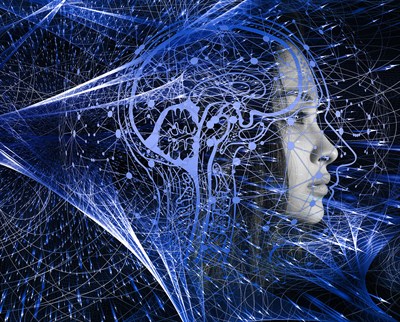
 Max Planck
Max Planck
Physicist, Father of Quantum Theory
"I regard consciousness as fundamental. I regard matter as derivative from consciousness. We cannot get behind consciousness. Everything that we talk about, everything that we regard as existing, postulates consciousness."
The Observer
The Definition of Consciousness:
Consciousness is a somewhat nebulous word that conjures up a different meaning to different people. There are many aspects and nuances of consciousness, that may involve self awareness, spatial awareness, time awareness, memory, foresight, and the capacity to consider alternate choices. The ConscioCentric Paradigm investigates all of these topics in detail on this site, but at a fundamental level, Consciousness is broadly defined as: "the feeling of participation in reality."
Reality is the construct of spacetime. We experience spacetime as 3-Dimensions of Space (up/down, left/right, forward/backward), along with a 4th Dimensional that we experience as Directional Time, or the capacity for change of the 3D construct. The Consciocentric paradigm investigates the interpretations of the Schrodinger Equation and follows a similar model to Huge Everett's "Many Worlds" interpretation of quantum wave collapse and quantum probability. This interpretation is regarded as the most likely and holistic approach to understanding quantum mechanics, and the implication is that there is a 5th Dimension that we experience as Choice / Freewill / Alternate Possibilities of 4D Spacetime. This interpretation solves the peculiarities of quantum wave collapse and quantum probability that have been at the heart of physics debates for the past 100 years. This site will investigate these topics in much more detail, but for now, we can just focus on 4D Spacetime as being a definition for "reality" in the consciousness definition.
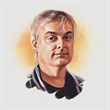 David Chalmers
David Chalmers
Philosopher and Cognitive Scientist
"We won't have a theory of everything without a theory of consciousness."
Feeling is the other word which must be defined for the definition of consciousness. What does it "feel like" to see the color blue? What does it "feel like" to smell chocolate? What does it "feel like" to touch something cold. These are questions that are at the core of definitions of consciousness, and David Chalmer's postulate of the "Hard Problem" of consciousness. There is a difference between a scientific understanding of the physics, and conscious feeling based on sensory input or thought. The most fundamental sense, (and debatably the only real sense), is the sense of touch. This sense is indeed present for all matter, even down to an individual atom and its subatomic constituents. An electron participates in the feeling of touch, through the fundamental forces of gravity bringing matter together, and the electromagnetic force interacting with other matter or energy. Indeed this same microscopic process is the same that feel when we use our finger to touch a screen or mouse button. The individual atoms and electrons in our finger electromagnetically repel other matter and electrons, and we feel this as touch. Likewise, the case could be made that even taste, smell, hearing, and vision all are descendants of touch, in that they all require, at the subatomic level, the touching or excitation of electrons and measurement of these vibrations to convert light or molecular interactions into what we call a sense or feeling. The important distinction here and one of the foundations of the ConscioCentric paradigm is that at the atomic level, the sense of touch is present and intrinsic to all matter. A feeling of touch is inseparable from matter.
A Brief History Quantum Mechanics:
 Max Planck
Max Planck
Physicist, Father of Quantum Theory
"As a man who has devoted his whole life to the most clear headed science, to the study of matter, I can tell you as a result of my research about atoms this much: There is no matter as such. All matter originates and exists only by virtue of a force which brings the particle of an atom to vibration and holds this most minute solar system of the atom together. We must assume behind this force the existence of a conscious and intelligent mind. This mind is the matrix of all matter."
The Nature of Matter
Approximately 100 years ago, around the initial discovery and foundational groundwork that was laid for quantum mechanics, we first got a glimpse into a radical new paradigm shift for understanding reality and consciousness. Quantum mechanics, at its core, is so astoundingly mindboggling and worldview altering, that at the time of the initial discovery, the implications were simply not believed or were second guessed by physics titans like Heisenberg, Schroedinger, Bohr, Einstein, and several more of the most important scientists in human history. You may have heard famous quotes like Einstein's -- That he simply "could not believe in spooky action at a distance", or "god doesn't play dice". This is arguably the most well respected thinker in human history, who at the time of the initial discoveries, could not subscribe to their astounding implications. Einstein would later change course after setting out to prove some implications of quantum mechanics to be wrong, and instead confirming them (now referred to as the EPR Paradox). This fact is mentioned just to set the stage for what the general scientific consensus was among the top physicists at the time.
Quantum mechanics changes our worldview by stating that matter, at its core, is the result of probabilistic wave collapse. At the quantum microscopic level, when we divide the atom into its constituent sub-atomic parts (quarks, electrons, etc), we find they are not really "solid things", but rather they exist (or don't exist) based on quantum probability. This probabilistic nature of reality is defined by Erwin Schrodinger's Equation. This is all widely accepted and has been proven over and over through hundreds of experiments in the past 100 years.
There are many aspects and nuances to quantum mechanics and relativity that are mind boggling, such as wave particle duality, the dual slit experiment, delayed choice, quantum superposition, and action at a distance / quantum entanglement. Those are all explored in this site, but the one fundamental peculiarity that has puzzled physicists the most, from the initial discovery through today, is "What causes the collapse of the wave function?" or to put it another way "What causes this probabilistic nature of reality to solidify into solid matter?"
The "Interpretations" of Quantum Mechanic Wave Collapse
There are many "interpretations" for this, and its among the most heated and spirited debate that can be had among physicists... but also perhaps the most dangerous to careers. In fact, physicists have shied away from discussing it over the past 100 years because it opens such a can of worms, and more "business minded physicists" and universities have traditionally favored applied science. We have benefited immensely from quantum mechanics, as evidenced in advances of computers, the internet, the space program, worldwide communications, geo-positioning, biotech, and other fields. But we, as a human species, have largely avoided delving deep into the interpretation of wave collapse.
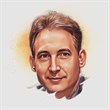 Brian Greene
Brian Greene
Physicist, Mathematician, String Theorist, Author
"Bohr advanced a heavyhanded remedy: evolve probability waves according to Schrodinger's equation whenever you're not looking or performing any kind of measurement. But when you do look, Bohr continued, you should throw Schrodinger's equation aside and declare that your observation has caused the wave to collapse. Now, not only is this prescription ungainly, not only is it arbitrary, not only does it lack a mathematical underpinning, it's not even clear. "
The Hidden Reality
Scientists have largely subscribed to "The Copenhagen Interpretation" of wave collapse, primarily created by Niels Bohr and Werner Heisenberg - two of the key figures in the foundational groundwork of quantum mechanics. It states that when a quantum system is "observed", the act of observation causes the quantum wave collapse into a state of solid reality. If a system is not observed, it behaves according to Schrodinger's equation of quantum probability, but once its observed, the wave function collapses. The problem with the Copenhagen interpretation is that it basically side steps / fails to define the most important distinction: What is an observer, and why does the observation cause collapse? The observer may be a person, it may be an animal, it may be a microscope or camera (although depending on which physicist you talk to, there is debate on whether the camera itself is the observer, or whether the wave collapse happens through delayed choice at the time a human observers the image) Or the observer may be defined as "any macro object", either meaning any object over a given microscopic size, or even down to the level of an individual atom. Is a single hydrogen atom an observer? The Copenhagen Interpretation of wave collapse pretty much side steps the issue and says there's two sets of rules, and at some point we switch which rules we use to measure reality, but that point is undefined, and the reason why is undefined. This is the "dogma of quantum mechanics" for the past 100 or so years.
Hugh Everett and the Relative State Interpretation of Quantum Mechanics (Many Worlds)
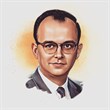 Hugh Everett
Hugh Everett
Physicist, Quantum Foundations Pioneer
"The Many-World's Interpretation is the only completely coherent approach to explaining both the contents of quantum mechanics and the appearance of the world."
Along the way, there have been many other interpretations, including some that, from the ConscioCentric point of view, represent the correct interpretation. Most of the other interpretations have been sidelined through, as scientists and physicists have been reluctant to devote their life to exploring them - it's very hard to get a job as a physicist who is devoted to "quantum foundations" rather than some applied science or technology related to quantum mechanics. The view that is closest to the ConscioCentric paradigm is that of Princeton physicist, Hugh Everett, who, in the 1950s, first presented his "relative state interpretation" of quantum wave collapse (better know as the Many Worlds interpretation) Of all the interpretations of quantum wave collapse over the past 100+ years, Everett's Many World's interpretation represents the most straightforward and intuitive solution, albeit with the implication that we actually persist in a sort of multiverse of possibilities. On the surface, this sounds far out and wild, but upon investigating it and the pragmatic, day to day implications, it is actually quite intuitive and beautiful in its composition. Today, there are really two interpretations that are leading the way for understanding wave collapse: Everett's Many World's interpretation, and the various branches of String Theory / M-Theory, which actually propose a similar approach to many worlds. You have probably heard of the Many Worlds / Multiverse paradigm through sci-fi and occasional stories in Nature, Science or Tech magazines or TV shows.
 David Deutsch
David Deutsch
Physicist, Quantum Computation Pioneer, Dirac Prize
"Niels Bohr's "Copenhagen Interpretation" tried to regard quantum theory as being nothing but a set of rules of thumb for predicting the observed outcomes of experiments, saying nothing else about reality. This (flawed, dogmatic) interpretation is still popular today, and is known by many as the "shut-up-and-calculate interpretation of quantum theory". The interpretation is vague and inconsistent -- and Bohr excused the various contradictions and gaps by using a combination of instrumentalism and studied ambiguity. "
The Beginning of Infinity
As mentioned above, pursuing quantum foundations and exploring this topic was not a lucrative field, and Everett, who wanted to continue down the path and devote his time to it, instead was pushed into receiving a government/defense department job, like so many of the great physicists over the past 100 years. Everett did continue to explore the topic and published some of the most important thoughts in human history, before passing away at just 51 years old, in 1982. If the dogma of the Copenhagen Interpretation hadn't been so strong, and physicists were allow to pursue quantum foundations for a salary, Hugh Everett's prominence and legacy would rival that of Planck, Bohr, Shroedinger and Einstein.
Recently, in the past 20-30 years, there has been some renewed interest and the topic is being revisited. More and more physicists are coming to grasp with the fact that Everett's Many Worlds interpretation is the most holistic, straightforward and mathematically consistent explanation for understanding quantum mechanics.
The ConscioCentric Paradigm:
Consciousness does not arbitrarily arise out of matter. Rather, consciousness the controlling source that all 3D matter and energy unfolds from, through 4D time.
Consciousness is the guiding force for the progression of the universe and the evolution of species, through undulating motions of separation and unification. There are different "levels of consciousness" related to dimensional awareness and "spheres of consciousness" which work together as symbiotic systems that allow advanced, evolved lifeforms and control over an extended reach of 3D matter.
The Foundation and Levels of Consciousness
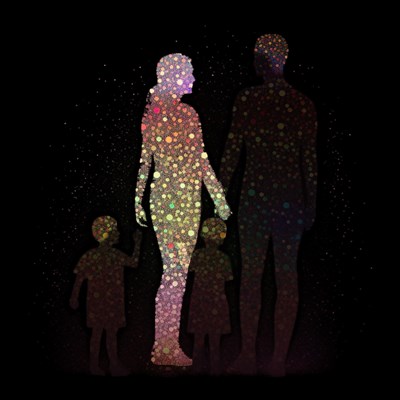 Every particle of 3D matter unfolds from this consciousness field, however a single particle will have a very small sphere of consciousness, and limited feeling of its participation in reality. 3D matter is "aware" of its three dimensions with a basic sense of touch based on gravity and electromagnetism, however basic forms of matter may not be aware of 4D time or 5D freewill and the consensually probabilistic multiverse.
Every particle of 3D matter unfolds from this consciousness field, however a single particle will have a very small sphere of consciousness, and limited feeling of its participation in reality. 3D matter is "aware" of its three dimensions with a basic sense of touch based on gravity and electromagnetism, however basic forms of matter may not be aware of 4D time or 5D freewill and the consensually probabilistic multiverse.
Over time, consciousness creates more complex structures through ceaseless motions of division and unification. Gravity is the basic will of the collective conscience to unite, in opposition of the big bang and dark energy's impulse to separate. Over 4D time, molecules form, solar bodies are created, planets unite, and then the game of consciousness continues on to the creation of basic single cell life forms. Through ages of geological time, consciousness drives more and more complex acts of division and unification of more complex forms - a creative evolution of biological forms. To create more complex life, pockets of consciousness create specialized forms of life that can work together in a united fashion to achieve functionality beyond that of single purpose forms. Consciousness creates organs, each of which have a localized conscious control sphere, and operate semi-autonomously, but working together within a bio-system to create a complex life form that can expand its reach to more matter through time.
The Most Fundamental Force of Consciousness
 Erwin Schrodinger
Legend of Quantum Mechanics
Erwin Schrodinger
Legend of Quantum Mechanics
"Every conscious mind that has ever said or felt 'I' ... controls the 'motion of the atoms' according to the Laws of Nature."
The driving force of consciousness is to create - to divide and re-unify into new forms, and then to expand control over larger pockets of matter - to expand individual conscious spheres. This drive to create and control is perfected by forming more complex life forms that can manipulate their 3D environments, and take advantage of additional senses that connect the "local conscious being" with other matter in the environment. Initially, consciousness and matter has only the sense of touch... particles uniting and connecting. The nearby vibrations of unfolded 3D matter. Further senses of smell and taste are fabricated, to better identify nearby materials in the 3D environment. The highly advanced sense of vision created to further expand the sensory awareness of pockets of consciousness in the local and distant expanses of the 3D material world.
Consciousness eventually leads to biological forms so advanced they can create and use tools, and fully take control of the environment, expanding the conscious sphere of control beyond the biological bodies. Communication advances to share ideas and concepts of 3D material constructs and 4D time. Communication is a method of collaborative unity and conscious control... allowing conscious bodies to share information - to "create together" in communities, and for individuals to share concepts. Concepts are the juxtaposition of 3D moments through 4D time. Memory and visualization are consciousness accessing various frames from the 4D timeline and 5D multiverse... identifying 3D moments of now, and juxtaposing them against other moments to create ideas, concepts and meaning. The 5D sense of freewill and the multiverse is where our current "high level consciousness" is focused. Shaping 3D matter through 4D time, based on 5D choice.
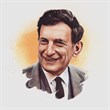 David BohmPhysicist, Conscious Researcher, Philosopher
David BohmPhysicist, Conscious Researcher, Philosopher "Consciousness is much more of the implicate order than is matter . . . Yet at a deeper level [matter and consciousness] are actually inseparable and interwoven , just as in the computer game the player and the screen are united by participation."
 Max PlanckPhysicist, Father of Quantum Theory, Nobel Prize
Max PlanckPhysicist, Father of Quantum Theory, Nobel Prize "I regard consciousness as fundamental. I regard matter as derivative from consciousness. We cannot get behind consciousness. Everything that we talk about, everything that we regard as existing, postulates consciousness."
 Stuart HameroffAnesthesiologist and Consciousness Philosopher
Stuart HameroffAnesthesiologist and Consciousness Philosopher "I think more like a quantum Buddhist, in that there is a universal proto-conscious mind which we access, and can influence us. But it actually exists at the fundamental level of the universe, at the Planck scale."
 Deepak ChopraPhysician, Philosopher, Conscious Researcher
Deepak ChopraPhysician, Philosopher, Conscious Researcher "Forward-looking physicists now realize that mind must be accounted for, which seems like a simple realization except that it was clouded behind a screen, the biggest factor being naïve realism... What is life if we get rid of relying on the five senses? These aren’t rhetorical questions. Life would be transformed if we abandoned the lure of the physical world and the mistaken data of the five senses. The human mind is uniquely able to go beyond appearances, and when we do, the destination is always consciousness."
 David DeutschPhysicist, Quantum Computation Pioneer, Dirac Prize
David DeutschPhysicist, Quantum Computation Pioneer, Dirac Prize "Niels Bohr's "Copenhagen Interpretation" tried to regard quantum theory as being nothing but a set of rules of thumb for predicting the observed outcomes of experiments, saying nothing else about reality. This (flawed, dogmatic) interpretation is still popular today, and is known by many as the "shut-up-and-calculate interpretation of quantum theory". The interpretation is vague and inconsistent -- and Bohr excused the various contradictions and gaps by using a combination of instrumentalism and studied ambiguity.
"